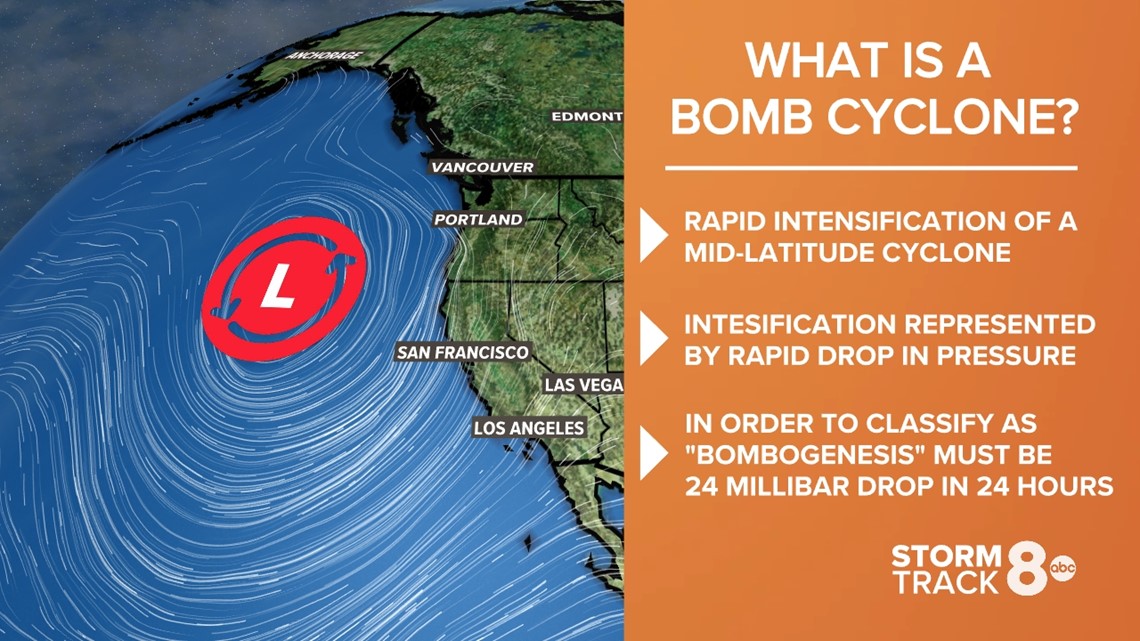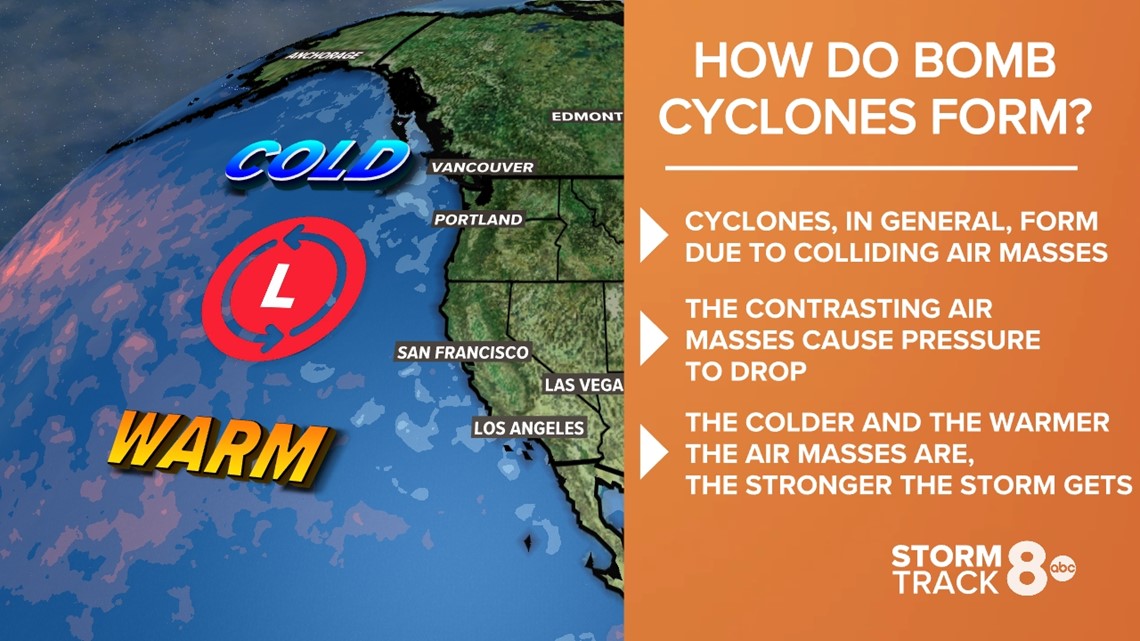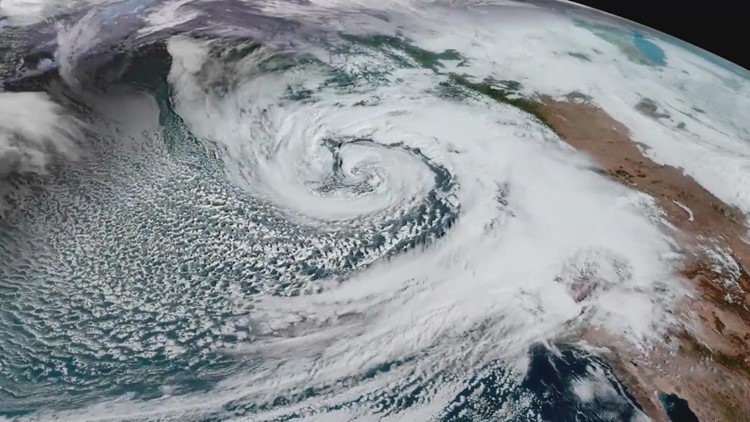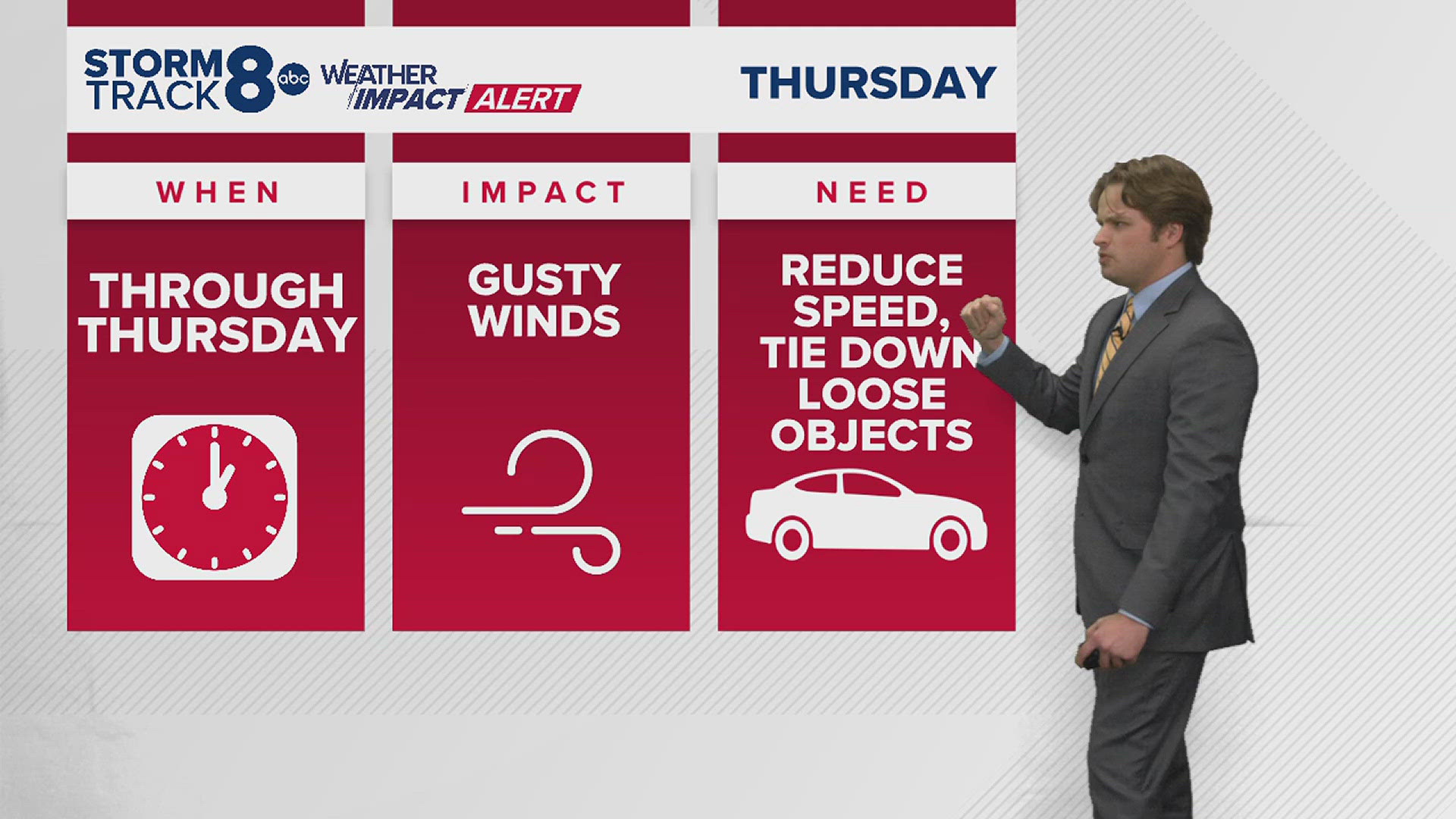MOLINE, Ill. — The term "bomb cyclone" has gained popularity over the past couple of years. You may also hear meteorologists commonly refer to it as "bombogenesis" or "explosive cyclogenesis." What does this intimidating term mean exactly?
WHAT IS A BOMB CYCLONE?


Bomb cyclones are the rapid intensification of a storm system or mid-latitude cyclone. The storm must lose pressure rapidly. In order for the system to be considered a bomb cyclone, it must drop 24 millibars of pressure or more within 24 hours.
HOW DOES A BOMB CYCLONE FORM?


A mid-latitude cyclone is a storm system that develops between the tropic and polar regions. These form when there's a large temperature difference between two air masses. As long as the temperature differences remain strong, the system will continue to drop in pressure and intensify. That is how a storm system can "bomb out." The colder and warmer the air masses are, the faster the system can drop pressure and gain strength.
Storm systems will usually bomb out near oceans or the Great Lakes where warmer and moist air can be found. However, the effects can be felt nearly all over the United States. Bomb cyclones also usually occur during the winter months when our temperatures differences are greatest across the midlatitudes.
These cyclones are huge on satellite imagery and appear to have an "eye" in the center. They almost look like a massive winter hurricane. However, a hurricane and a bomb cyclone are not comparable as they form in very different ways.
WHAT WEATHER CAN YOU EXPECT?
Mid-latitude cyclones, in general, bring us our precipitation and clouds. When a storm officially reaches bomb cyclone status, we can expect some more significant hazards. Since these storms often happen during the winter months, blizzard conditions are a concern. Dangerous wind chills, high winds, snow and even flooding are all hazards to consider.
CAN IT EFFECT THE QUAD CITIES?
Absolutely! We usually won't see the system bomb out until after it swings through the Great Lakes, but just recently we felt the impact close to home from a bomb cyclone. Just a few days before Christmas 2022, we were met with winter storm warnings and blizzard warnings. Dangerous wind chills and high winds battered our region. Once that system reached the Great Lakes, the pressure dropped even quicker and officially became a bomb cyclone.
Watch more news, weather and sports on News 8's YouTube channel



